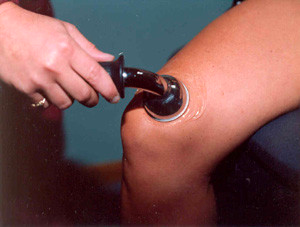Groin Strain Physiotherapy
By Nigel ChuaA groin strain injury is an injury to the muscles located in the deep muscle of the inner thigh. It is a fairly common type of injury that our senior physios treat regularly in our physio clinics in Phoenix Rehab Singapore.
Our groin muscles are medically termed as adductor muscles, and are comprised of six muscles that work together, spanning from the inner pelvis to the inner thigh bone.
They function to pull/bring your knees together, and also help with hip joint movements. Because of their functions and movement, our adductor muscles are very important to athletes, such as
- runners
- sprinters
- football players
- badminton players
- and all active people including sports-people and regular 'non-sporty' individuals too.
A strain in the groin will cause direct pain and weakness in the groin area, which affects any dynamic changes in movement direction, and limits a patient's ability to kick or move forwards.
HOW DO I KNOW IF I HAVE A GROIN STRAIN?
- Sharp pain on the inside of the thigh, while turning
- Pain when turning or changing direction quickly
- Pain when touching the groin muscles
- Tightness and spasm of the groin muscles
- In severe cases, bruising and swelling can occur over the injured area.
HOW CAN OUR GROIN MUSCLE GET STRAINED?
Any muscle strain happens when the muscle is stretched beyond its limits, leading to micro-tears or even full-blown ruptures. The same applies to our groin muscles.
Micro-tears of our groin muscle fibers are termed as groin strain, and there are 3 grades of severity:
- Grade 1: Mild damage to individual muscle fibers (less than 5% of fibers) that causes minimal loss of strength and motion. These injuries generally take about 2-3 weeks to improve.
- Grade 2: More extensive damage with more muscle fibers involved. However, the muscle is not completely ruptured. These injuries present with significant loss of strength and motion. These injuries may require 2-3 months before a complete return to athletics.
- Grade 3: Complete rupture of a muscle or tendon. These can present with a palpable defect in the muscle or tendon. However, swelling in the area may make this difficult to appreciate. In Grade 3 a corrective surgery is required to reattach the damaged muscle and tendon.
GROIN STRAIN PHYSIOTHERAPY
With an acute/fresh groin strain injury, what needs to be done immediately is the application of RICE:
- Rest (stop the activity entirely)
- Ice/Cold Therapy
- Compression (swelling and pain management)
- Elevation (swelling and pain management)
The RICE method is very important and needs to be done properly and correctly to reduce the amount of bleeding and subsequent secondary tissue damage within the groin muscle. Thereafter refer to a doctor, which can be a general practitioner (GP), but we recommend either:
- a sports physician
- an orthopedic surgeon (see the list of doctors we serve here)
We will be more than happy to refer you to a doctor that we have been working with - just contact us for this.

Once the acute stage has stabilized, then we can start more active physiotherapy rehabilitation. Physiotherapy may comprise of:
- pain management
- scar tissue management
- ultrasound therapy to accelerate soft tissue healing
- walking/ambulatory/gait correction
- stretching of joints and soft tissue
- strengthening
- lower and higher balance training
- sports-specific physiotherapy.
Browse other articles by category
Physiotherapy for Knee Pain Physiotherapy For Slipped Disc Physiotherapy for Neck Pain PHYSIOTHERAPY
PHYSIOTHERAPY
 Hand Therapy
Hand Therapy
 Alternative
Alternative
 Massage
Massage
 Traditional Chinese Medicine Treatment
Traditional Chinese Medicine Treatment
 Rehab
Rehab
 Physiotherapy For Lower Back Pain
Physiotherapy For Shoulder Pain
Orthopedic Doctors, Insurance & Healthcare
Physiotherapy For Upper Back Pain
Frozen Shoulder
Physiotherapy for Back Pain
Physiotherapy For Lower Back Pain
Physiotherapy For Shoulder Pain
Orthopedic Doctors, Insurance & Healthcare
Physiotherapy For Upper Back Pain
Frozen Shoulder
Physiotherapy for Back Pain

 Whatsapp us now
Whatsapp us now